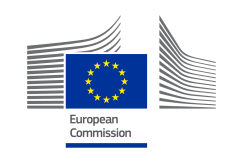Policies
01 April 2025
Circular economy action plan
Policies
01 April 2025
1. Healthy, balanced and sustainable diets for all European consumers
2. Prevention and reduction of food loss and waste
3. A climate - neutral food chain in Europe by 2050
+4 more
Login / create an account to be able to react
-
130

The European Commission adopted the new circular economy action plan (CEAP) in March 2020. It was one of the main building blocks of the European Green Deal, Europe’s new agenda for sustainable growth. The EU’s transition to a circular economy will reduce pressure on natural resources and will create sustainable growth and jobs. It is also a prerequisite to achieve the EU’s 2050 climate neutrality target and to halt biodiversity loss.
Editorial team
European Commission - DG ENV
Topics
EU-27
EU Institutions
-
CoC aspirational objectives
-
-
1. Healthy, balanced and sustainable diets for all European consumers
-
2. Prevention and reduction of food loss and waste
-
3. A climate - neutral food chain in Europe by 2050
-
4. An optimised circular and resource-efficient food chain in Europe
-
5. Sustained, inclusive and sustainable economic growth, employment and decent work for all
-
6. Sustainable value creation in the European food supply chain through partnership
-
7. Sustainable sourcing in food supply chains
-
Share
The new circular economy action plan (CEAP) announces initiatives along the entire life cycle of products. It targets how products are designed, promotes circular economy processes, encourages sustainable consumption, and aims to ensure that waste is prevented and the resources used are kept in the EU economy for as long as possible.
It introduces legislative and non-legislative measures targeting areas where action at the EU level brings real added value.
Objectives:
Measures that were introduced under the new action plan aim to:
- make sustainable products the norm in the EU
- empower consumers and public buyers
- focus on the sectors that use most resources and where the potential for circularity is high such as: electronics and ICT, batteries and vehicles, packaging, plastics, textiles, construction and buildings, food, water and nutrients
- ensure less waste
- make circularity work for people, regions and cities
- lead global efforts on circular economy
Actions:
The Commission proposes 35 actions listed in the action plan.
Monitoring framework:
In 2023, the Commission revised the circular economy monitoring framework, previously adopted in 2018. The revision adds new indicators on
- material footprint and resource productivity - to monitor material efficiency
- consumption footprint – to monitor if EU consumption fits within planetary boundaries
The Circular economy action plan was linked to relevant policy areas linked to agri-food:
- Chemicals
- Circular economy
- Circular economy at the global level
- Industry
- Plastics
- Sustainable development
- Waste and recycling
Related legislation:
Communication COM/2020/98 A new Circular Economy Action Plan For a cleaner and more competitive Europe
Comments (0)
See also
Digital Decade Policy programme 2030
- Categories
- 2. Prevention and reduction of food loss and waste 3. A climate - neutral food chain in Europe by 2050 4. An optimised circular and resource-efficient food chain in Europe +3 more
Chemicals Strategy for Sustainability
- Categories
- 2. Prevention and reduction of food loss and waste 3. A climate - neutral food chain in Europe by 2050 4. An optimised circular and resource-efficient food chain in Europe +3 more
EU Social Dialogue
- Categories
- 2. Prevention and reduction of food loss and waste 3. A climate - neutral food chain in Europe by 2050 4. An optimised circular and resource-efficient food chain in Europe +3 more




